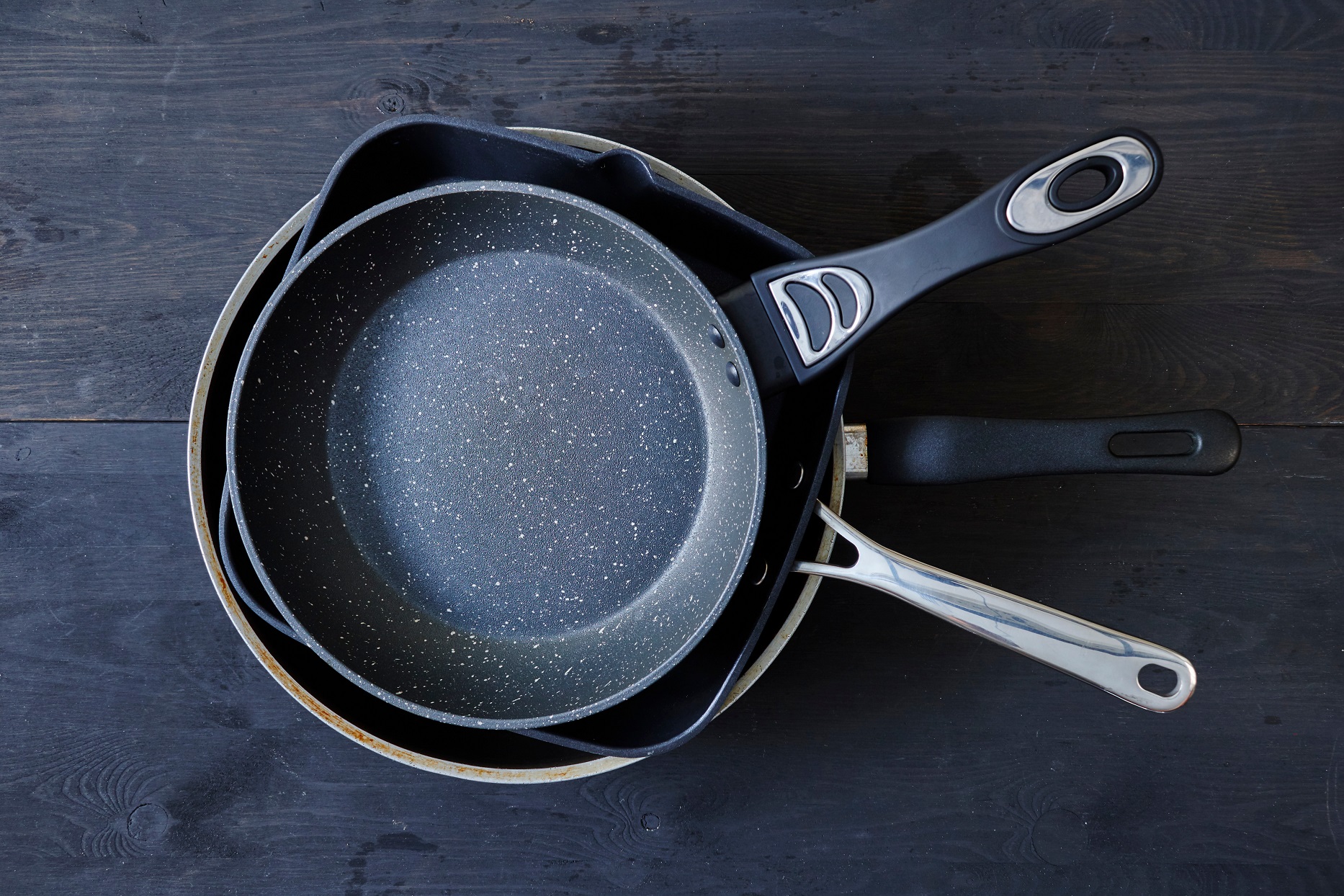
You can't beat a nonstick pan for omelets and fish fillets that slide right out with barely a slick of oil or butter, and no scraping required. But rumors have been swirling for years that nonstick coatings are harmful to health. So what's the truth?
Let’s back up. The reason for concern was a chemical called perfluorooctanoic acid (PFOA), which was used by manufacturers to apply nonstick surfaces such as Teflon, the most commonly used nonstick coating. In some research, lab animals exposed to PFOA were more likely to develop tumors in areas such as breast and pancreas, and some (but not all) studies looking at people exposed to PFOA from living near or working at chemical plants suggested increased risks for certain kinds of cancer. Recently, FDA tests revealed the presence of a class of chemicals that includes PFOA in foods like produce, fish, and dairy. These substances have likely contaminated the soil and ground water via the chemical plants that produce them. Blood tests have shown that these chemicals can accumulate in the bloodstream and may cause health problems, according to the FDA.
The makers of Teflon stopped using PFOA starting in 2012, but what about older pans? According to the FDA, the PFOA used in making nonstick cookware evaporates during the manufacturing process, so they say it's not present by the time consumers actually cook with them. The American Cancer Society agrees and states that there are no known risks to using Teflon-coated pans.
But you still need to take some precautions with nonstick pans. That's because the coating can start to break down when heated at high temperatures. That can cause the pan to change colors or lose its nonstick quality. Overheating nonstick pans can also release fumes that can cause temporary flu-like symptoms in people—and can be harmful or even fatal to pet birds.
According to Chemours, the company that owns Teflon, breakdown of the coating can happen above 500 degrees F. Significant breakdown occurs at temperatures above 660 degrees. An easy-to-remember rule of thumb with nonstick pans: Butter and oil will scorch and smoke starting around 400 degrees. So if your food is totally burnt and inedible, that means your coating may be deteriorated too. If you accidentally leave a nonstick pan empty or dry and unattended on high heat (hey, it happens), the coating is probably toast.
Here's some more advice on using nonstick pans safely:
Still don't feel okay about using nonstick? There are plenty of alternatives for cookware such as stainless steel, ceramic, cast-iron, or enameled cast iron.
Sally Kuzemchak, MS, RD, is a registered dietitian, educator, and mom of two who blogs at Real Mom Nutrition. She is the author of The 101 Healthiest Foods For Kids. She also collaborated with Cooking Light on Dinnertime Survival Guide, a cookbook for busy families. You can follow her on Facebook, Twitter, Pinterest, and Instagram. In her spare time, she loads and unloads the dishwasher. Then loads it again.

